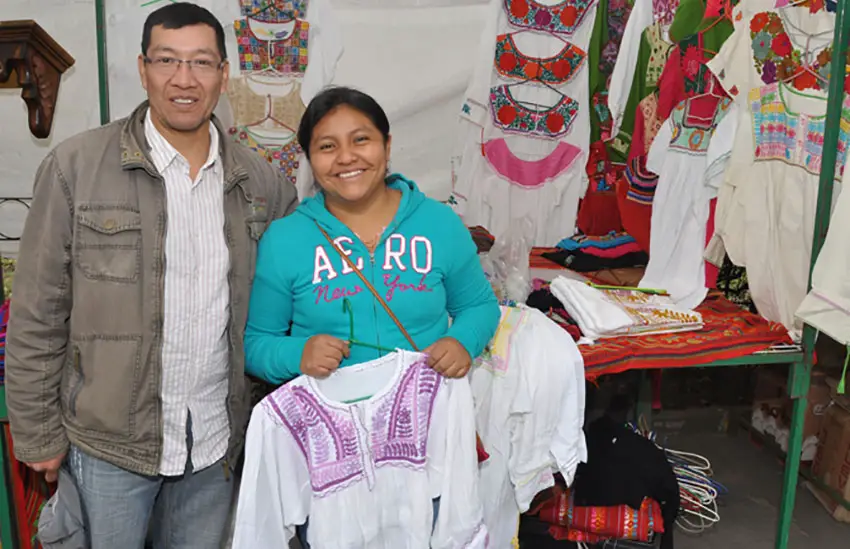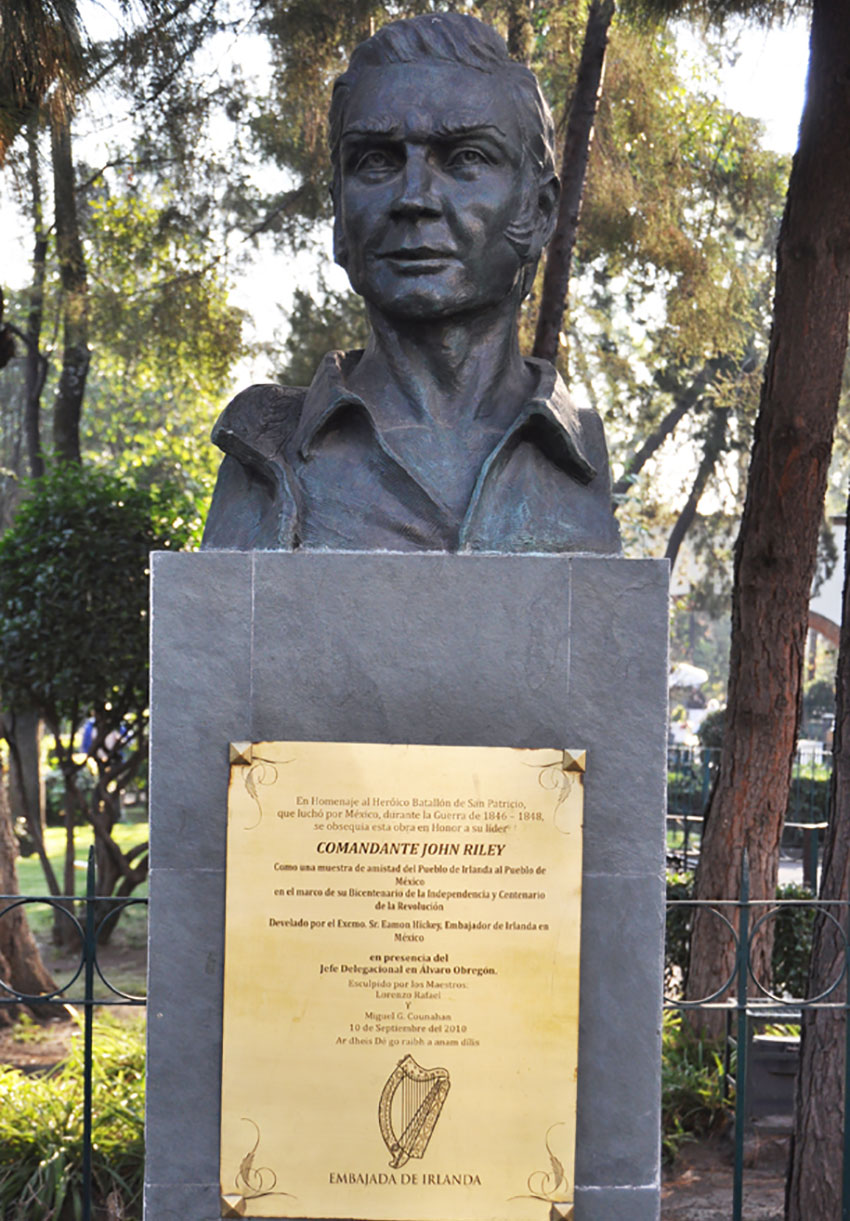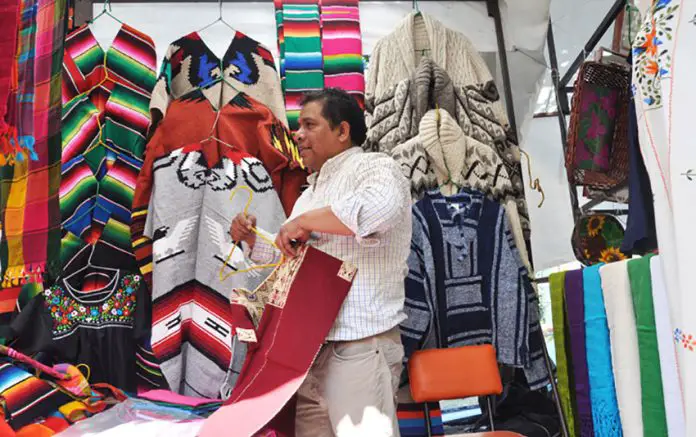I stumbled across Tianguis Artesanal Tenanitla — the oldest tianguis in the city that is dedicated to traditional Mexican arts — over 10 years ago when I was wandering around Mexico City’s San Ángel neighborhood.
Tianguis comes from a Náhuatl word and is used to describe markets that are only open one day a week and for this market, that’s Saturday. The Tenanitla market holds such a fascination for me that whenever I’m going to be in Mexico City — which is fairly often — I make sure I’m there on a Saturday.
The market is located in Plaza Tenanitla, a tiny park just three blocks from Revolucíon, one of Mexico City’s busiest avenues. The two areas are a study in contrasts. While Revolución is a noisy three-lane road, teeming with traffic and lined with modern buildings, this part of San Ángel is tranquil, featuring narrow cobblestone streets, brightly painted colonial-era houses, boutiques, galleries and plenty of restaurants.
According to Lucio Ramírez Villanueva, the tianguis‘ former president and author of a book about it, the market had its start in the early 1960s when an American named Jim Tillet opened a shop that sold traditional artwork. The store was successful and artists from the city and nearby states soon began setting up their stalls.
It was first known as the Saturday Bazaar but the name changed in 1964 when it was organized into a formal art association. It has continued to operate to this day and Ramírez told me that the market has had one guiding principal since its founding. “We want to continue to preserve traditional arts. The intention is to preserve Mexican customs and traditions.” A stroll through the market shows that it’s been successful.

Early on Saturday mornings Plaza Tenanitla, a tiny sliver of a park, is transformed into a bustling art market. Vendors unload their goods from vans, cars and taxis and begin setting up their stalls. While most artists back in the 1960s were local, artists now come from states as far away as Oaxaca.
Armando Hernández sells handmade clothing, tablecloths and other items, all bursting with vibrant colors. His father was a founding member of the market and, in fact, many of the artists are the children and even grandchildren of founding members. “All of our products are made by hand,” said Hernández, who travels weekly from Santiago Tianguistenco, México state, a two-hour trek. “We use techniques and traditional designs that have been in our family for generations.” When I asked how many generations, he laughed and said, “Many.”
Agustín Girón Méndez, the market’s current president, and his wife, Lucia, have a stall filled with garments whose designs reflect their Mayan roots; both Augustín and Lucia are Tzotzil Mayas from Tenejapa, a small Mayan village in Mexico’s southernmost state of Chiapas.
“I learned how to make these clothes from my father,” said Girón. “The designs have changed, have evolved a little but it is important to preserve the concept. We believe it is necessary to maintain our language and customs because through our language and art, we are preserving our history.” Many of the designs depict the natural world — faithful renderings of animals and plants — while others are more stylized.
While most of the stalls are located under a tent, some are located outside the front and rear entrances. These include María de Jesús Bernal’s stand, which specializes in miniature designs. “Here you can find everything you would find in a Mexican house, only in miniature,” said Bernal.
A person’s bound to get hungry after perusing the market and there are many options. Guadalupe Ávila Torres has been selling traditional sweets like alegría and oblea de semilla for over 30 years. Her stand is just outside the entrance. And just a few steps away, you can buy delicious, freshly made empanadas that are a must every time I visit. I’m addicted to the mushroom empanadas but am determined to try some others someday.

More substantial fare can be found in the many nearby restaurants, ranging from the moderately expensive to the downright cheap.
Artists who are not part of the tianguis set up in a couple of nearby parks and even more line the streets. Although the tianguis is only open on Saturdays, artists who sell in those parks are also there on Sundays.
There’s an interesting, although sad, bit of history connecting this part of San Ángel with the United States.
When the U.S. invaded Mexico in 1846, the army was made up of a significant number of European immigrants, especially Irish who faced considerable discrimination both in the army and back in the U.S. Soldiers began deserting soon after arriving in Mexico and some of them joined the Mexican army, including a few hundred who formed the Batallón de San Patricio (the Saint Patrick Brigade).
Although there were a mix of men from several European countries, the majority apparently came from Ireland and were led by John O’Reilly (there are at least three spellings of his surname). The San Patricios fought against the U.S. in several battles, and many, including O’Reilly, were captured at the Battle of Churubusco.
They were court-martialed, and one of the trials took place in San Ángel. Those who deserted after the war was declared — 50 in all— were hanged; 16 in San Jacinto Park in San Ángel and the rest in other locations. Those who deserted before the declaration of war, including O’Reilly, received 50 lashes and were branded with the letter “D” (for “deserter”) on one cheek. O’Reilly, as the leader, received two “D’s.” A plaque inscribed with the names of the members of the brigade and a bust of Riley are half a block from the tianguis.
Like most markets in Mexico, Tianguis Artesanal Tenanitla has been closed due to the coronavirus but Girón, the market’s president, was hopeful that it would be open again soon.
Joseph Sorrentino is a regular contributor to Mexico News Daily.
